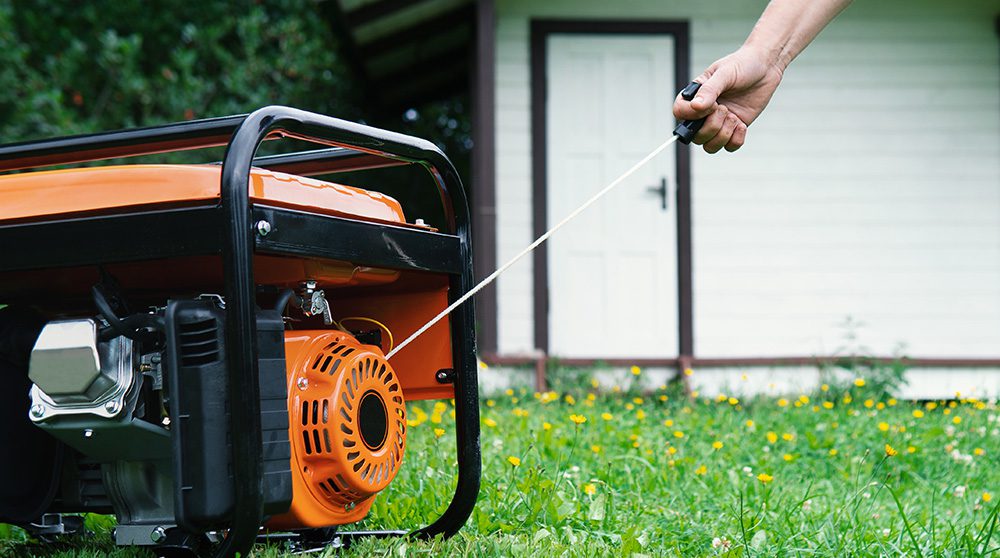8 generator safety tips.

Power outages are a common occurrence in many parts of the country, particularly during extreme weather conditions such as high winds, thunderstorms, or snowstorms. And during those prolonged periods of darkness or extreme temperatures, a portable generator can be an excellent option – providing an immediate power supply to keep the lights on, appliances running, and the house functioning. However, it’s important for homeowners to understand how to use it, to help avoid potential hazards.
If you could benefit from learning generator safety tips and the best practices for power outages, read on for advice from our home insurance experts.
Know your generator and its capacity. How much wattage can your generator handle? Most come with a label that details their maximum capacity load, plus an instruction manual that outlines how to use them safely. Thus, before plugging anything into your generator, check the wattage/amperage ratings attached to each appliance and device, and remember that overloading your generator can cause it to overheat or start a fire. Note: If you haven’t purchased a portable generator yet, the American Red Cross can help you figure out what size you need.
Find a safe space to use it. One of the most significant risks associated with generator use is carbon monoxide poisoning. To prevent exposure, never operate a generator indoors or in an enclosed space, like a garage. Instead, keep it outside in a well-ventilated area, at least 20 feet from doors, windows, vents, and overhanging trees. Also, be sure to place your generator on a flat, dry surface to help prevent electrocution.
Install battery-operated carbon monoxide alarms. Carbon monoxide is a colorless, odorless gas that can accumulate quickly and can cause serious harm. To help ensure you’re not exposed, especially during a power outage, we recommend having an alarm on each floor of your home.
Turn things off before you connect them to your generator. To help prevent damage to both the appliance and the generator, connect things when they’re turned off. Then, once the generator is running, turn on your appliances and lights one at a time to avoid overloading the unit.
Use extension cords safely. If you need to use extension cords to connect devices to your generator, be sure they meet appropriate standards for length, rating, and gauge. Shorter cords, for example, are less likely to overheat and should be of sufficient size for the generator’s output capacity. You’ll also want to confirm extension cords are labeled for outdoor use and have a grounding pin. If you’re using a generator in wet conditions, ensure the generator and extension cords stay dry to avoid damaging the generator. Never cover a running generator with a tarp. Instead, opt for a well-designed generator cover from a variety of retailers.
Ensure you have enough fuel. During power outages, gas stations may not have power either, so it’s essential to store enough fuel for your generator. We recommend storing fuel in a cool, dry, and well-ventilated place — always in approved containers. Avoid storing fuel indoors or near an open flame.
Refuel the right way. Always use the type of fuel recommended in the generator instructions or on its label. Then, when it’s time to refuel, turn the generator off and let it cool first, as gasoline spilled on hot engine parts could ignite.
Maintain your generator. Your generator needs regular maintenance to ensure optimal functioning and safety. The best practice is to follow the manufacturer’s instructions and make a point to change the oil and air filters as recommended. In the meantime, keep your generator clean and dry.
With careful use, your generator can provide you with a reliable source of power during an outage and bring you peace of mind when you need it most.
Should you have any additional concerns about generator safety tips, be sure to consult with a licensed professional.



